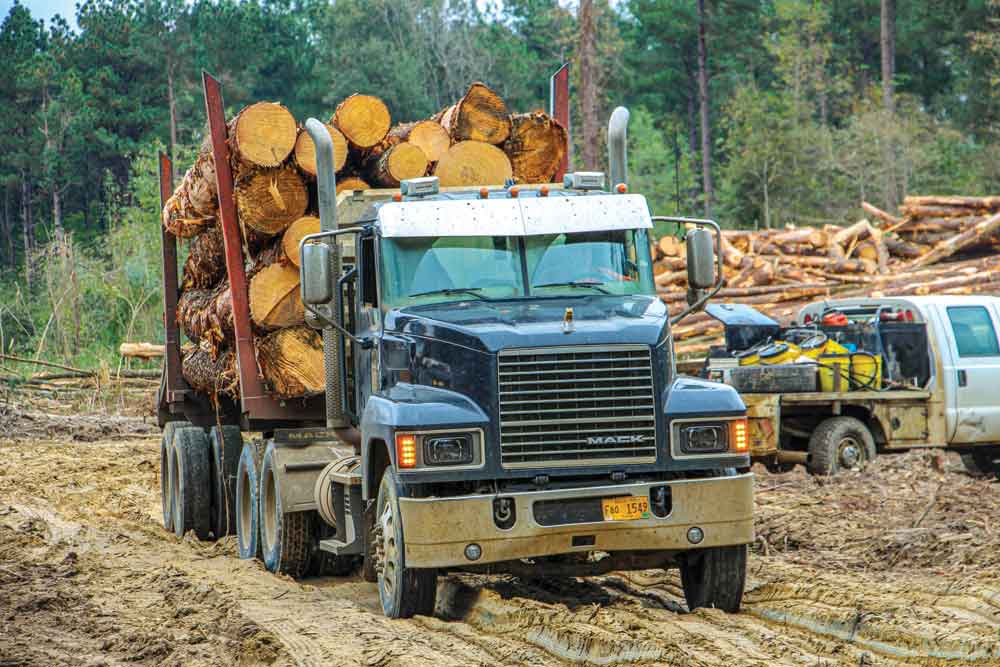Georgia Seeks To Raise Log Load Limits
A plan to boost weight limits for trucks on Georgia state highways is proving a heavy lift against determined opposition. After the scope of the bill was cut down earlier in the House and still garnered barely enough votes to pass, ultimately, the Senate Transportation Committee took a few more logs off the truck. The committee, on a 7-4 vote, approved a new version of House Bill 189 that would allow trucks moving agricultural and forestry commodities to carry up to 88,000 pounds (40,000 kilograms) on state roads. Now, the limit on state roads is 80,000 pounds, but trucks are allowed a variance of up to 84,000 pounds. The bill goes to the full Senate for more debate. The House would then have to approve the changes.
The higher limit would only be good until July 1, 2024. Heavier trucks wouldn’t be allowed in 13 core metro Atlanta counties, and local police and sheriff’s deputies could, for the first time, write tickets for overweight trucks. Now, only the state Motor Carrier Compliance Division can write tickets. By next year, senators said, Georgia leaders need to try to find ways to increase funding for the state’s transportation system. Lawmakers have been pushing for a statewide freight and logistics plan, but it would cost another $1 billion a year, at least, to pay for projects including wider highways, improved interchanges and expanded railroads.

A Georgia House committee had originally sought to permanently raise the weight limit to 90,000 pounds for all trucks, before voting 93-81 to allow that heavier weight for only logging, farming and mining commodities. But Senate Transportation Committee Chairman Greg Dolezal, a Republican from Cumming (in metro Atlanta), bluntly told supporters “there are not the votes on this committee” to pass even the bill the House passed. City and county governments and the Georgia Department of Transportation have opposed the increase. Trucks would remain limited to 80,000 pounds on interstate highways.
Latest News
USDA Funds Could Help Restore Alabama Longleaf Pine Ecosystems
Some $3.7 million in USDA funding is available to agricultural producers willing to help restore and protect the habitat of gopher tortoises. The money is available through the USDA’s Natural Resources Conservation Service jointly as part of the Working Lands for...
Biomass Has Possibilities And Drawbacks In South Carolina
South Carolina is currently grappling with the transition to biomass and clean energy. The war on and decline of coal, a historically inexpensive energy source, has struck the Palmetto State particularly hard. Eight coal plants have been retired since 2012 and six...
Have A Question?
Send Us A Message
